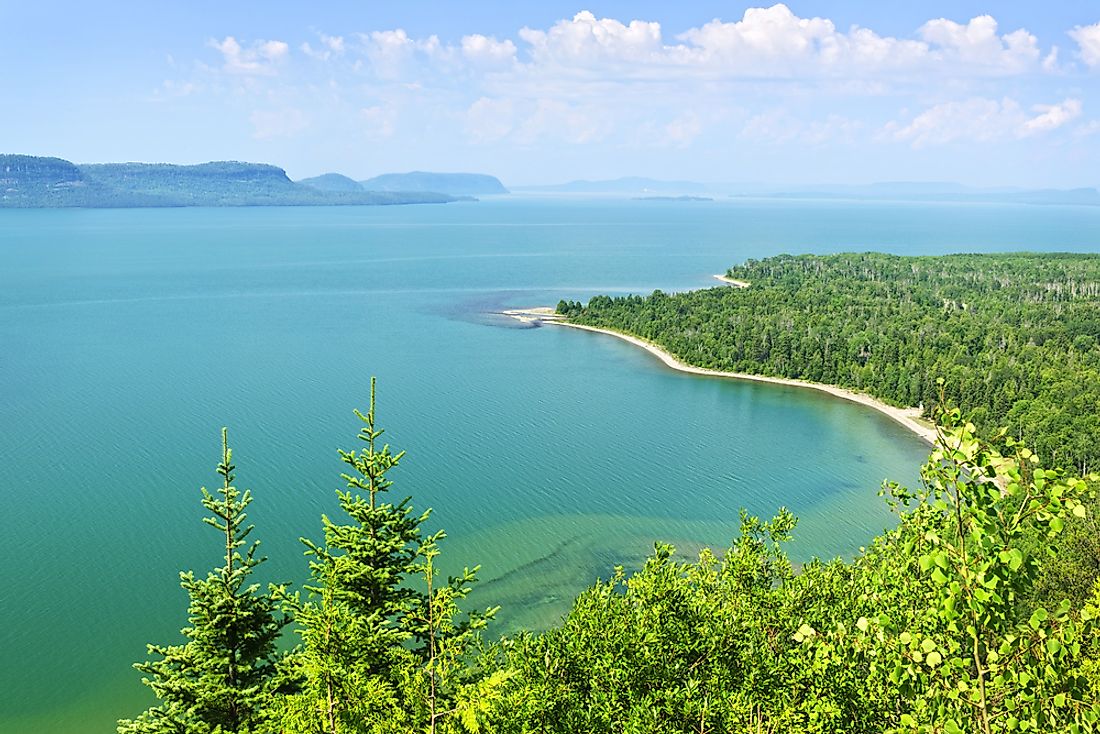What Is Post-glacial Rebound?

Post-glacial rebound is a process where the Earth's crust, which was formerly depressed under heavy ice sheets, rises as the ice sheets recede in the aftermath of deglaciation. The effects of post-glacial rebound can be immediate or take place for thousands of years. The effects of the Earth’s most recent post-glacial rebound, which occurred thousands of years ago, are still being felt today in some parts of the world. The Earth experienced its most recent glacial period between 110,000 and 11,600 years ago, also known as the Earth’s last glacial period. Global glaciation reached its peak some 22,000 years ago in what was known as the Glacial Maximum.
Last Glacial Period
During the last glacial period, much of the Earth’s northern hemisphere was covered with huge ice sheets. These ice sheets were about 2 miles thick in some regions. The ensuing pressure exerted on the crust forced the surface to deform and displaced the underlying mantle. The exact cause of deglaciation in the last glacial period remains a mystery, but it is thought to have started 15 millennia ago and resulted in post-glacial rebound. As the ice sheets receded, the pressure was alleviated, and the crust underwent gradual uplift. The process that is known as glacial isostatic adjustment take place over thousands of years due to the viscous nature of the underlying mantle.
Isostatic Rebound
Isostatic depression takes places when the tremendous pressure is exerted on the Earth’s crust by a heavyweight, forcing the crust to sink into the asthenosphere. The process has been observed in regions having large ice sheets such as Greenland and Antarctica. In some places in Greenland, the ice sheet is so massive (being averagely 1.2 miles thick) that it has displaced Earth’s surface to below sea level. As the ice sheet recedes, the crust protrudes back to its original position in what is known as isostatic rebound. Scientists believe that in some regions, the Earth’s crust is yet to revert to its original form. The uplift is thought to be moving at a rate of 1 cm each year, a rate at which scientist believe will take the Earth another 10,000 years to reach its equilibrium level.
Effects of Post Glacial Rebound
The effects of post-glacial rebound are both immediate and gradual. The receding ice sheets left large basins on the Earth’s surface, which would later transform into lakes. North America’s Great Lakes are believed to have been formed in this way. The sudden change in pressure on the Earth’s crust by the receding ice sheets stressed the Earth’s crust and as a result, became susceptible to earthquakes. Regions, where the glacial load was highest, are also believed to have become prone to volcanism. The effects are also witnessed in the Earth’s oceans through changes in sea levels. During glaciation, global sea levels plummet, as water evaporated from the seas, condensed and fall as snow on Earth, with no way of being channeled back to the sea. During the recent Glacial Maximum, sea levels are believed to have fallen by hundreds of feet, exposing submerged islands and interconnecting continents. However, as ice sheets melted during deglaciation, the melted water ran back to the sea, resulting in rising sea levels.











